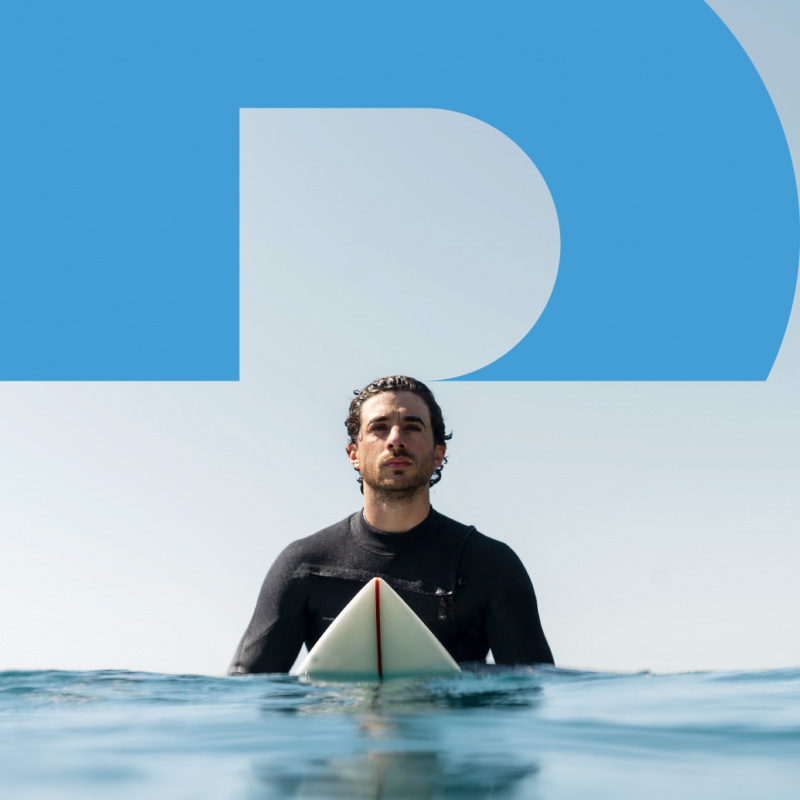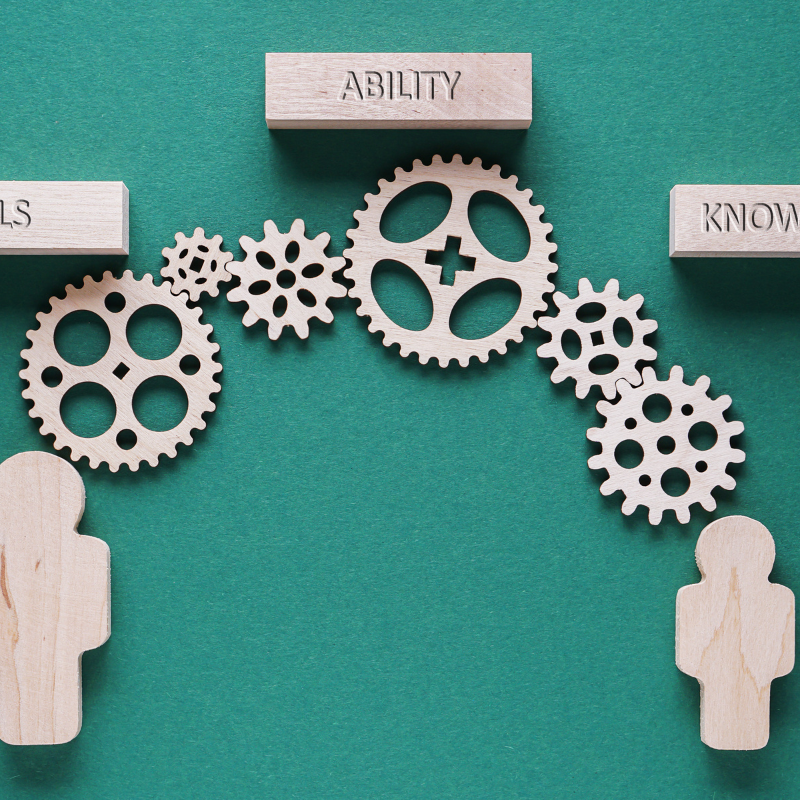
We bring the strategic foresight approach (trend, scenario planning & backcasting, anticipatory risk management...) to HR strategy setting. In this way, we help HR to define more resilient and anticipatory strategies with regard to future scenarios. Training in foresight methodologies applied to HR domains as part of the HR competency toolkit.
Methodology

Strategic Foresight
We usually reason about the future by projecting the past to short-term (2-3 years) scenarios. Let us overcome the limitations of this approach, distinguishing between Forecast (short-term future) and Foresight (medium- to long-term, uncertain and discontinuous future). Through hands-on exercises, we experience the challenges of using Foresight, focusing on high-impact, low-predictability scenarios.

Scenario Planning Workshop
We delve into future scenarios relevant to the organization and the HR function, analyzing key trends (technological, demographic, social, industry and world of work, etc.) and identifying the elements of greatest uncertainty and impact. We use cognitive activation techniques (narratives, images and videos) to explore and make tangible such future scenarios.

Retro-Planning
The exploration of scenarios enables retro-planning to define actions that can be taken to support the addressing of desirable futures, prepare for inevitable futures or reduce the likelihood (or impact) of dystopian futures. A number of decisions (or proposed decisions) are translated from this exercise placed in a multi-year vision
Applications and case studies

HR Analytics Maturity Model: Challenges, Opportunities, and Why It Matters
A maturity model helps bridge gaps in skills, tools, and processes, turning data analysis into a strategic lever.

Strengthening the HR Analytics approach, between challenges and opportunities
HR Analytics turns data into strategic value for organizations. Discover a real-life case from the Utilities sector, featuring practical tools and actionable insights.

Building an HR Analytics capability: from data collection to informed decision making
Find out how to build an effective HR Analytics capability, with maturity models, common obstacles and processes to obtain values from data.

Designing Organizational Development process management platforms with a user-centric approach
We had the opportunity and privilege to work alongside a software house dedicated to a specific sector, to help it define how to evolve the features of its management platform with respect to the Modules dedicated to HR processes of Organizational Development (performance management, training, skills mapping and analysis, strategic workforce planning), adopting an approach that puts the user, his experience and needs at the center, starting from the initial phase of listening and defining requirements.

HR Operational Excellence: best practices for operational excellence in HR
As seen in the context of a case study we recently described, HR Operational Excellence in human resources is a strategic approach that aims to improve HR processes and ensure that they operate as efficiently and effectively as possible.

Behavioural Economics for Continuous Change: an HRI workshop on the future of change management
Discover HRI’s survey on change management: the current state, organizational contexts, and the challenges and opportunities of behavioral economics.
The evolution of organizational models: a look into the future under the banner of agility
Currently, most organizations adopt a hierarchical organizational model and within which each role is carefully defined and occupies a certain position in the corporate organizational chart. While such a model is the most common solution, it does not allow for drawing on high levels of organizational flexibility and agility, and strongly inhibits the ability to make decisions quickly, elements of fundamental strategic importance in the context of a VUCA (or BANI) reality

Change management to the test of continuous change
In recent years, the transformations undergone by the global competitive environment have generated a landscape in which organizational change can no longer be approached as an episodic and discrete event.

Retail Excellence from an organizational perspective: a skills-based approach
What is retail excellence Retail Excellence is a concept that refers to excellence in the management and execution of retail activities. In practice, it means achieving the highest operational and customer experience standards in a store or chain of stores. But how to build an operating model that can bring companies to this milestone? Let’s look together at the path that led us to structure, for a client in the fashion industry, an organizational model that is efficient, flexible and able to support the professional development of key resources in the organization. Challenges to achieve high standards of retail excellence In more detail, the challenges that were to be answered were aimed at achieving: A flexible model that can adapt to the evolution of the network in terms of size (number of stores) and type of store (flagship store, outlet store, mall store, downtown store) A model that can enhance and enable the professional growth of key resources (career path for retail resources) A cost-effective and headcount-efficient model. The stages of the project The project approach involved the Retail Operations, Organizational Development and HR Business Partner functions working together. Two phases were conducted, a Co-design phase of the organizational model, and a subsequent Skill Gap Analysis and People Match phase. As part of the co-design sessions of the organizational model, the following were defined: The “task-based” and consequently “skill-based” organizational model (which we will explain in a moment) and the consequent association of existing stores with the proposed types of organizational model by Store type The coordination mechanism with back-end processes (commercial planning, logistics and procurement, returns management, …) The skill assessment & career development model for retail resources. Next, in the Skill Gap Analysis and People Match phase were: Map the skills held by people Verified skill gap between

Human Centered Design and UX for HCM platforms: what opportunities?
Can an interface, experience, or product be designed directly from the user’s needs, preferences, and desires?

Let’s discover Key Behavioral Indicators (KBI) and why they are so essential
It is often difficult for us to understand why specific performance is or is not achieved in the company; Key Behavioral Indicators, or KBIs, are critical to this understanding and achieving ever-better results. Let’s see what they are and how to leverage them in HR.

Purpose bottom-up
Introduction In this article we illustrate a business case of bottom-up purpose creation implemented by HRI. In the coming weeks we will publish within the “projects” section of our blog our other real cases and application projects.

Debiasing AI: Using Artificial Intelligence for an Ethical and Inclusive Future
AI used in recruiting processes is based on natural language processing (NLP), capable of analyzing texts to draw inferences or make decisions. However, the models it employs also inherit implicit biases. Is this a limitation that can be overcome?

Efficiency and Control: The HRI Platform That Revolutionizes Logistics
In the logistics industry, the ability to monitor personnel performance, both internal and external, and track activity efficiency in real-time is crucial to ensuring quality service, reducing operating costs, and optimizing resource allocation.

Professional Skills Management: what it is and how to use it in managing critical skills
Professional Skills management reveals its full potential when it becomes key to planning decisions, training and development, and compensation elements. In this light, it can be an essential competitive advantage in an era of remarkable evolution of the critical skills needed within organizations.

In the future, will it still make sense to talk about knowledge and skills in the workplace?
We are professionals working in the field of Human Resources, believing that in this field more than in others, foresight thinking is necessary, because generating change and impact in people management is often a process that takes years.

Change Management: What It Is and the Challenges to Overcome
In an increasingly complex and dynamic business environment, and besieged by technological innovation, organizations are challenged to constantly change and adapt their activities to changing circumstances.

HR and Digital Transformation: What It Is, Technologies, and Benefits for Businesses
Technological innovation is accelerating like never before, and the effects can be felt daily in every aspect of our lives. The professional sphere is no exception, where HR is also facing this challenge: seize the opportunities offered by Digital Transformation, or surrender to obsolescence, not only of tools, but also of processes and organizational culture models.

HR Analytics: What It Is, How It Works, Benefits, and Examples
What are HR Analytics? HR Analytics (HRA) can be defined as the application of statistical methodologies and data science algorithms to analyze data related to a company’s workforce.

A foresight perspective for designing the HR strategy
There are eight people around the table. Their decisions depend on opportunities for the professional growth and development of hundreds or even thousands of people.

The Future of HR Begins Today: Why Foresight Is a Key to Success
Designing strategies from the perspective of the future (instead of the past): foresight is a key success factor for companies. Over the past few weeks we have had the opportunity to speak with more than 50 HR professionals about the importance of adopting a foresight approach to guide actions in the present and near future.

Employee engagement: how to measure employee involvement
Employee engagement is a key factor in the success of organizations. You can read about it in a lot of research, and since so many people say so, we took the opportunity of a recent project to share with you some thoughts on the subject.

Artificial Intelligence: how to use it to support HR?
On Monday, March 25, the workshop “Human and Artificial Intelligence – New Models of Integration in Organizations, a Quantitative Approach” was held, during which, in collaboration with the HR Innovation Practice Observatory, we deepened the themes of the Observatory’s March 19 workshop entitled “HR and AI: The Evolution that passes through Human Resource Management.”

The role of Human-to-Human relationships in the digital age
The spread of increasingly advanced technological tools contributes to the increasing importance of Human to Human relationships within organizations.

Artificial Intelligence and Human Resources from ChatGPT Onwards
Around the table, to discuss Artificial Intelligence and Human Resources, were companies from very diverse sectors.
What united us was the desire to better understand this “hot” and much-debated topic, which in many ways remains little understood.

The ChatGPT interview: how professions and the workplace are changing
Introduction The ChatGPT interview: how professions and the workplace are changing You might ask why do an interview with ChatGPT. Well, in recent weeks the undisputed star of news reports, online blogs, and TV news is not a movie diva or a politician but a complex algorithm.

DE&I in Italy: where are we?
In this article we try to talk about DE&I in Italy: where do we stand? Let’s start with an example: housekeeper, if “the” we think of a governor, if “the” we think of the lady who helps us keep the house in order. Are you surprised by this?

Budgets plans and resolutions: the value of the new year
The year 2023 has just begun and it is time for budgets, plans, and resolutions: the value of the new year, however, is what we are most interested in. Looking back serves only to look forward with greater clarity.

Virtual reality for new educational experiences
The application of virtual reality for new training experiences is rapidly gaining popularity. The new frontier is soft skills training. HRI believes the most interesting developments are in DE&I, leadership and coaching.

Employer Branding and Talent Acquisition
A heartfelt topic at last night’s HR Intelligence digital aperitif, October 5, 2022: Employer Branding and Talent Acquisition: how recruiting strategy evolves in the face of new trends in the world of work.

Strategic management of critical skills
Introduzione In the “Thinking Space” on Thursday, February 24, we discussed the topic of critical competencies and questioned whether it should be approached tactically, when the need arises, or whether strategic management of critical competencies is not appropriate-if not indispensable.

Zoomers and Big Quit
Great Resignation or Big Quit What is the relationship between Zoomers and Big Quit? Let’s try to understand if and what relationships exist between under-30s and the voluntary resignation phenomenon in the U.S. and the role of HR in all this.

Spaces for Thought: 5 Digital Meetings
Spaces for thinking, comparing, sharing and possible solutions We take the space to reason about concrete cases and experiences and share doubts, questions, ideas, views and proposals. Let’s discover together how to understand phenomena and anticipate solutions!

HR Process Innovation: The Innesti Experience
Why do companies struggle to innovate on HR processes? Our experience with Grafts by Open Innovation – Future@work taught us a lot. Here’s what we learned.

Digital Aperitif 11-25-21: Real Cases and Workshop Results
To enable the HR function to be more effective and incisive, dialogue with business functions must be improved through a Data-Driven approach. We explored how to do this in our digital aperitif! With about thirty “enthusiasts,” including business managers, executives, and members of the HR function, we took the opportunity to delve into this topic, and some interesting considerations emerged.

Data-Driven HR – The Value of Data for Human Resources
Data Driven HR Data Driven HR (DDHR), means using data intelligently and deriving valuable information (insight) to make decisions that not only improve the performance of people within the company (including the HR function), but also contribute to the overall success of the organization.

The Value of Data for HR Strategy – Digital Aperitif
Event Type: Online Date and time: Thursday, November 25, 2021, 5:00 p.m. – 7:00 p.m. Event link: https://us02web.zoom.us/j/86491334899?pwd=ZFNqd0xzMkRrWTR6WHFiMHROWDRSQT09

People come first. It’s that simple
People come first. First, there is the person, then the “value” they can bring as professionals. First, there is Giovanna, with her toddler struggling with first grade. Tommaso and his mad passion for gaming.
